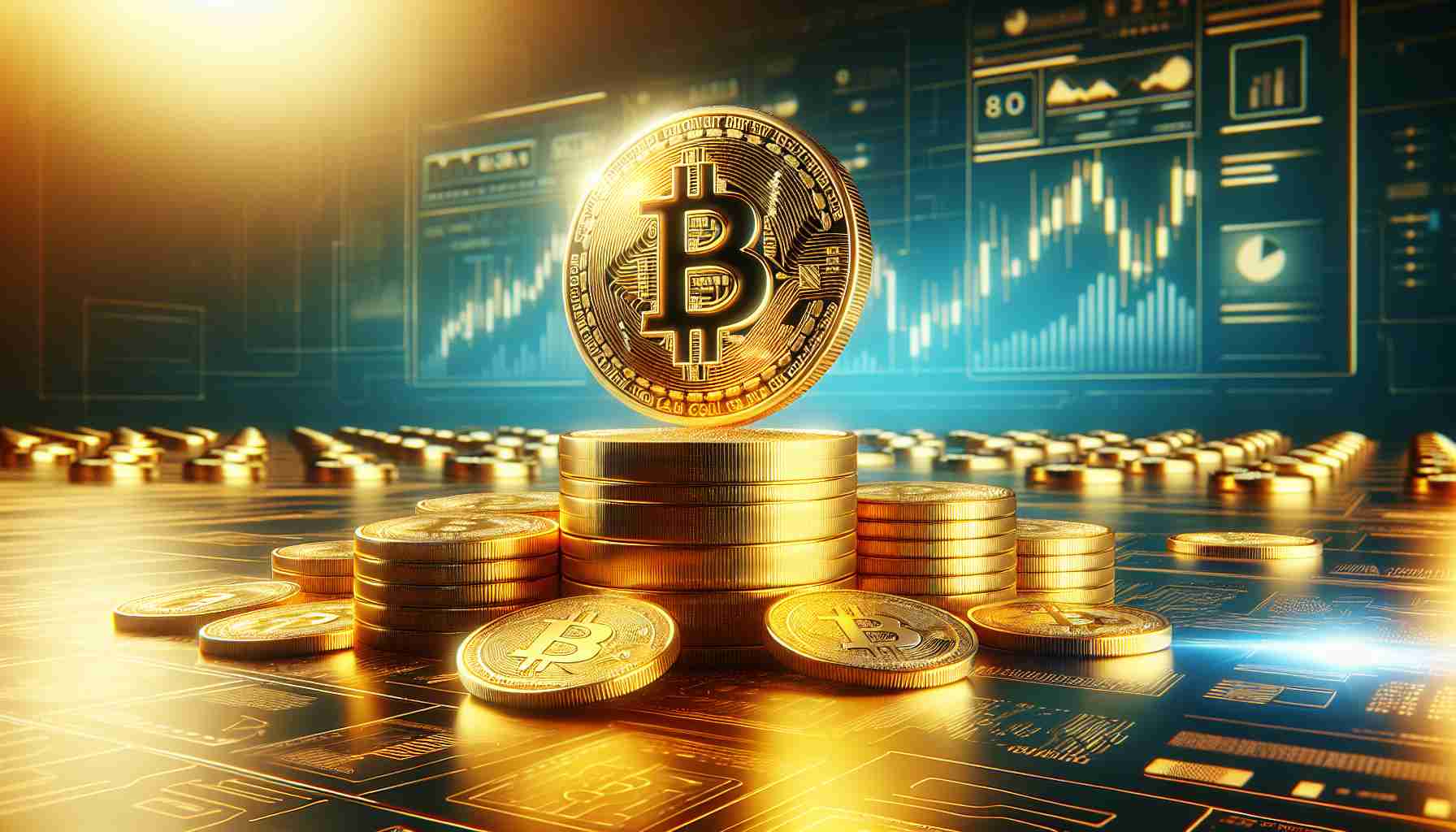As 2023 progresses, Bitcoin has astounded many with a 307% surge, bolstered by events such as the introduction of spot exchange-traded funds (ETFs) and the anticipation of the April halving. In a twist that surprises avid market watchers, gold has also climbed close to record heights, propelled by a wave of optimistic sentiment.
These two assets, although distinct, share intriguing similarities that often place them side by side in investors’ comparisons. Both are defined by their scarcity: Bitcoin boasts a 21 million coin cap encoded in its DNA, while gold’s finite presence in the Earth’s crust sets a natural limit. This scarcity has traditionally elevated their appeal as demand increases—a principle that has long established gold as a reliable store of value.
Beyond rarity, utility further connects the two. Gold’s shimmer graces jewelry and serves various industrial purposes. Bitcoin shines in its role as a decentralized network that streamlines global transactions, excising the middleman and reducing costs.
Diving deeper, Bitcoin reveals advantages that overshadow its lustrous counterpart. Unlike gold, whose potential supply could expand with increased mining efforts, Bitcoin’s cap is set in stone, fiercely resistant to change, thereby safeguarding the cryptocurrency’s value integrity. Its digital nature simplifies storage and transfer; divisible to minute fractions, Bitcoin can fluidly participate in economic exchanges where gold cannot tread—imagine attempting to chisel off a fragment of gold to settle a restaurant tab.
While the debate on the prime store-of-value rages on, Bitcoin emerges as the more lustrous option. Over the past five years, a $1,000 Bitcoin investment would have ballooned to nearly $8,200, far outpacing the 73% increase in gold’s value. This robust performance amid economic turmoil paints Bitcoin not just as a currency of the digital age, but as a beacon for growth-oriented investment, poised to outperform gold in the years to come.
Key questions and their answers regarding Bitcoin’s bright future versus gold:
– What factors contribute to Bitcoin’s soaring value? The factors include broader adoption by individuals and institutions, increased utility and acceptance for transactions, the introduction of Bitcoin-related financial products like ETFs, technological advancements, and the fixed supply that creates scarcity.
– Could Bitcoin’s value decline in the future? Yes, Bitcoin’s value is subject to volatility due to regulatory scrutiny, market sentiment, technological vulnerabilities, and competition from other cryptocurrencies.
– Is Bitcoin more volatile than gold? Yes, historically, Bitcoin has been more volatile than gold because it is a relatively new asset class and is subject to rapid price changes based on market demand, whereas gold prices are more stable due to its long-standing role in the global economy.
– How does the decentralization of Bitcoin affect its future? Decentralization means no single entity can control Bitcoin, raising its appeal as a hedge against traditional financial systems, but it also poses regulatory and security challenges that could affect its widespread adoption and stability.
– What are key challenges or controversies associated with Bitcoin versus gold? A major challenge is regulatory uncertainty, as governments around the world are grappling with how to manage and potentially integrate cryptocurrencies into existing financial systems. Another issue is environmental concerns associated with Bitcoin mining’s high energy consumption, compared to the environmental impact of gold mining.
– Environmental sustainability: Bitcoin vs. gold mining? Gold mining has a significant environmental impact involving physical land disruption, chemical use, and high water consumption—although efforts are being made to improve sustainability. Bitcoin mining consumes a substantial amount of electricity, which has prompted concerns about its carbon footprint. However, some mining operations are transitioning to renewable energy sources.
Advantages and Disadvantages:
Advantages of Bitcoin over Gold:
– Digital nature: Bitcoin’s digital form makes it easy to store, transfer, and divide, unlike physical gold.
– Fixed supply: Bitcoin’s supply is capped at 21 million coins, ensuring scarcity and potentially increasing value.
– Decentralization: The decentralized network excludes middlemen and may reduce transaction fees and enhance security.
– Potential for high returns: Bitcoin has shown potential for significant growth within a relatively short period.
Disadvantages of Bitcoin:
– Volatility: Bitcoin’s price can be highly volatile, making it a risky investment.
– Regulation: Unclear or unfavorable regulations can impact Bitcoin’s adoption and stability.
– Environmental concerns: The energy consumption for Bitcoin mining raises sustainability issues.
– Security: While the network is secure, user error and hacking can lead to loss of funds.
Gold has a longer track record as a stable store of value and is considered a safe-haven asset during economic instability. However, it lacks the high potential returns that Bitcoin has demonstrated and is less practical for day-to-day digital transactions.
For further information on Bitcoin, you can visit the official Bitcoin website at: Bitcoin.org. For more on gold and its market dynamics, a reliable source is the World Gold Council at: Gold.org. Please ensure that you consult these URLs directly, as content can update beyond the knowledge cutoff date.



